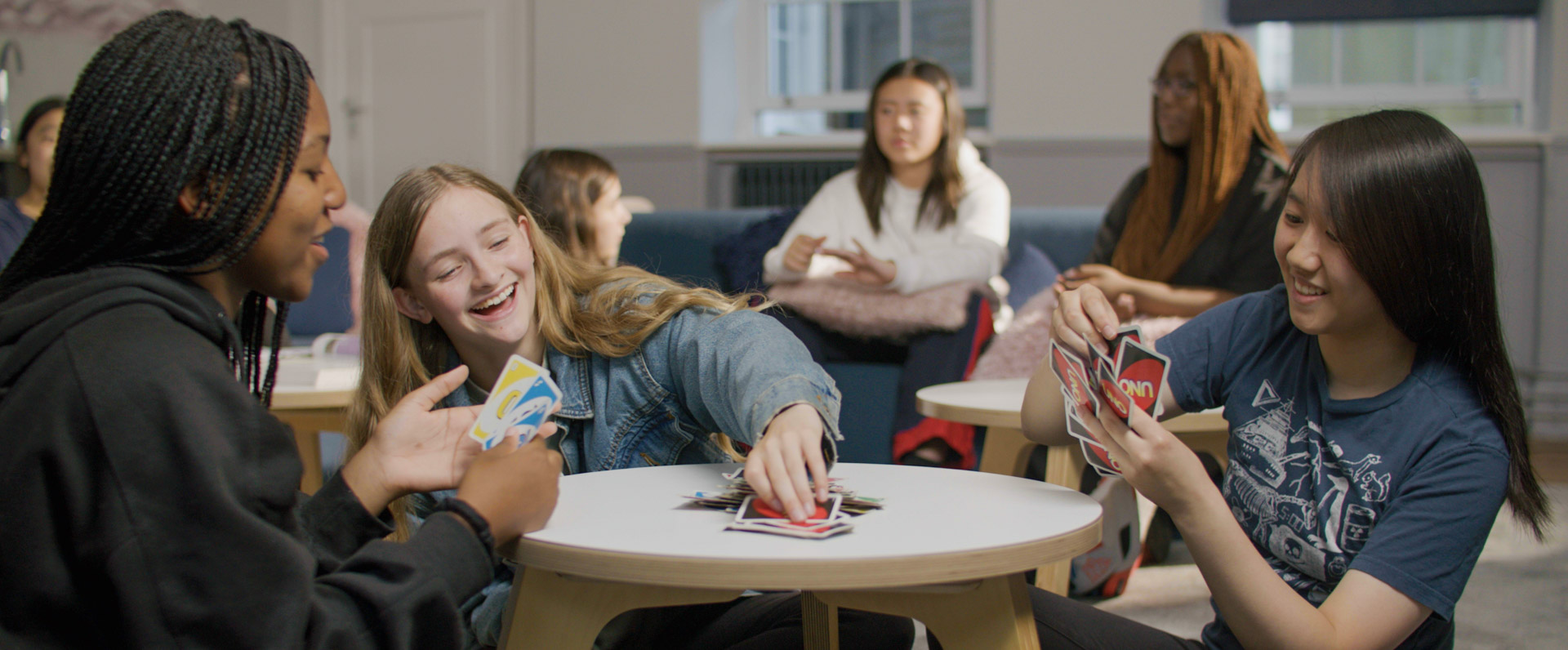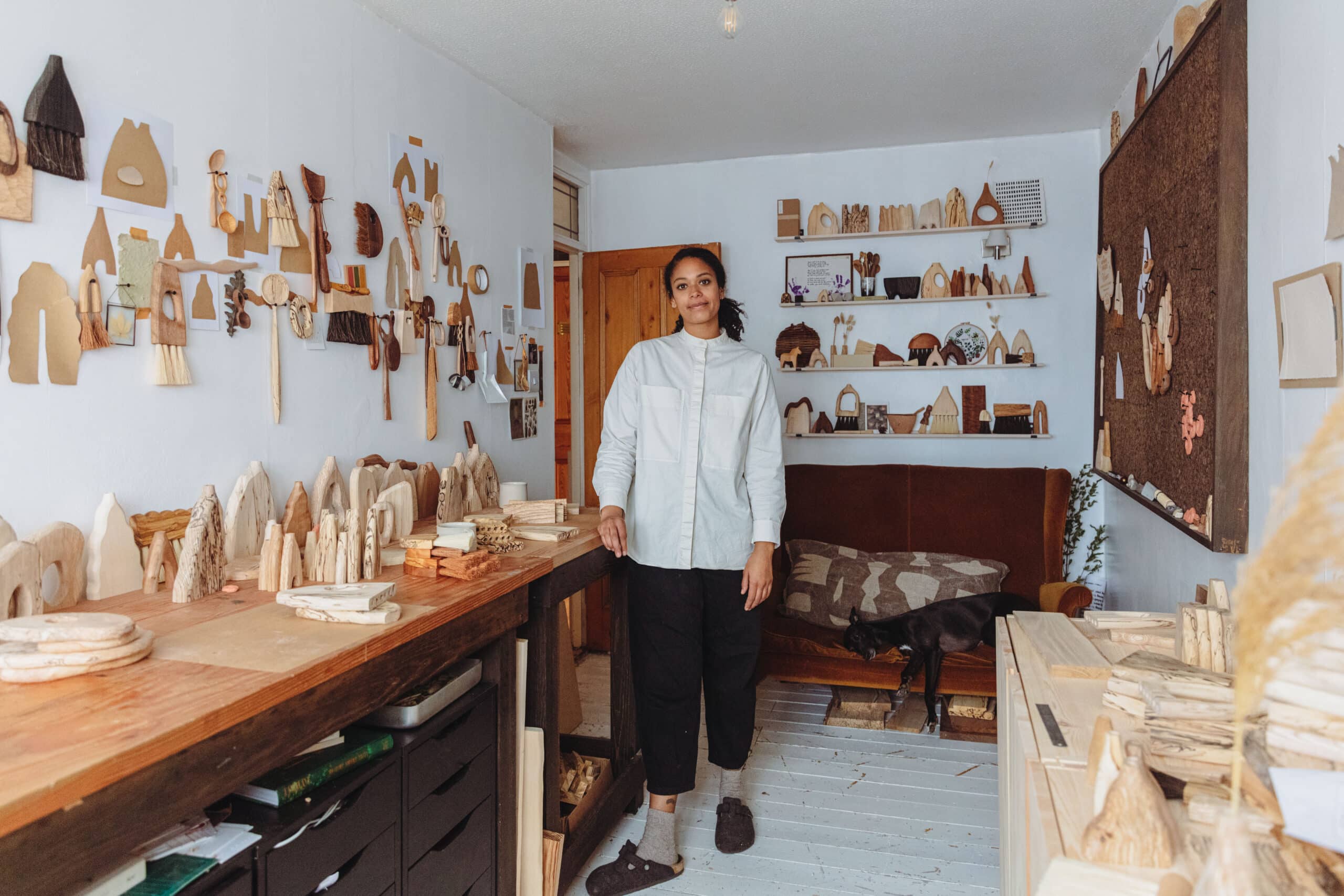We are thrilled to feature an article on the award-winning designer and maker in wood, Sophie Sellu in our upcoming publication of Masonica (the RMS alumnae magazine).
It has also been a joy to watch Sophie shine as a judge on Channel 4’s ‘Handmade: Britain’s Best Woodworker’, inspiring the next generation of woodworkers.
Design and Technology students Lisa and Dulcie recently had the pleasure of interviewing Sophie. Keep your eyes peeled for the full publication in early March.
In the meantime enjoy a snippet of their conversation below:
Can you tell us about your time at RMS?
I joined RMS in Year 7 in 1999 and stayed until the end of Sixth Form. I have ADHD and always struggled with the academic side of school. I loved that there were so many creative outlets at RMS and I was able to take DT all the way up to A level. It was amazing; we had two workshops and such lovely teachers. Miss Dines, Head of DT, had a huge influence on my career, and I always look back very fondly on my woodwork lessons with her.
I loved that there were so many creative outlets at RMS.
What did you do after leaving RMS?
I went on to study interior design at Manchester School of Art. It was great but not as hands on as I would have liked. A lot of the course was computer-based and there wasn’t much practical work. I graduated in the middle of a recession and our tutor sat us down and told us that none of us would get a job in interior design because it was a failing sector at that time!
After graduating, I stayed in Manchester and worked in fashion retail for some really cool stores doing visual merchandising. I designed and implemented their window displays and in store design which was really good fun. I went on to work for a bigger brand which unfortunately closed down and so I got made redundant. After that, I decided to move back to London and got a trend forecasting job in fashion. On paper the job was amazing – I got to travel and was pitching ideas and concepts to design teams, but then I got made redundant from that job too. I felt really frustrated and at 24 years old, I was fed up working really hard for other people, not being settled in a career and still living with my parents.
How did your career in woodwork begin and have you ever questioned the choices you have made?
Whenever I met up with my university friends, we would go to a one-day workshop, such as screen printing or pottery. This was a great way for us to come together as creatives and do something we loved. One of the classes I went on was a spoon carving course, where I was working with my hands and making something useful out of wood. It was really fun and it instantly made sense to me.
At the time, I was still working in the trend forecasting job, but I was now doing spoon carving when I got home from work. The job was really stressful and I hated it, but I would come home from a horrible day at work and have a therapeutic spoon-making session. Each time I made something, I felt I could face the next day at work.
I had been carving for about a year when I got made redundant for the second time. At that point, I decided to give myself six months doing the carving, and if within that time I hadn’t got anywhere with it then I would get another job. That was ten years ago and I am still carving.
I have been doing woodwork exclusively for six or seven years now. Prior to that, I had been doing occasional part-time jobs and some freelance design work to help pay the bills; I did all sorts to make it work. There were definitely times when I questioned my choice but I enjoy woodwork so much that I didn’t want to step away from it. I made a lot of sacrifices, such as living at home for a long time so that all my earnings could be invested into the business. Renting my first studio, having my own space, and being out of my parent’s garage was a huge and exciting step.
You only work with wood that would be considered waste. Why is that?
From day one, I decided that I would only ever use wood that was considered waste. That ethos started at school when I did one of my art A level projects on waste. I’d been inspired by artists like Kurt Schwitters and Roy Lichtenstein and I collected rubbish from everyone’s cars and made a huge collage from it.
From day one, I decided that I would only ever use wood that was considered waste. That ethos started at school.
When I first started learning my craft, I was using freshly cut greenwood, but as I developed, I tried to find other sources because it felt wasteful to chop down a tree to make a new object. So I started carving from material I found in a local reclamation yard, as well as broken furniture. Now I tend to work with storm fallen timber. One tree I have used has 180 rings on it; it was sad that it fell down, but it would have been even sadder if nothing was done with it at the end of its life.
How did this fantastic opportunity at Channel 4 come about?
Being a judge on Handmade: Britain’s Best Woodworker has been amazing. It wasn’t something I ever expected to happen and when I interviewed for it with five or six others, I didn’t think anything would come of it. At the time, it was just a good day out! When I got the call to say I had got the job, I was so shocked. That call came just three weeks before filming started.
Last May, a cast and crew of 70 of us were in a bubble in Wales, filming for five weeks. It was like a festival and I was definitely overwhelmed for a lot of it. Despite feeling completely out of my comfort zone, it was good fun. The workshop and the tools were amazing and meeting the makers was incredible, they are so passionate and talented.
We filmed two series over the summer. The first in May, the second in August, the second one was tough because it was during the heat wave but I enjoyed it more because I had settled into the routine, I knew all the crew, what was expected of me, and the format by then. It took three days to film one episode, then we had a day off and started filming the next episode over three days, and so on for five weeks. It was intense, but a lot of fun.
Do you have any other projects in the pipeline?
I have been working on a book about nature, making, woodwork and craft for about four years. I had a book deal lined up just before Covid, then the publishers pulled it because (ironically) they said there was no need for an at-home craft book at that time. Since then, I have had more offers so it is really exciting, but I’m not rushing it. It is my first book so I want to do it well and for it to be something that is special to me.
Do you have any advice for women going into wood carving?
Woodwork is a very male-dominated industry. At the beginning of my career, I had some really funny emails. I don’t put my name on the Instagram account, and the emails would often open with ‘Hello sir’, which was very presumptuous. There is always the risk of feeling that as a woman you’re not as strong or as able as a man but my advice would be to have the confidence to trust in your ability. There are people who think they know more because they are male and that is not true. One of the things I love about being a female woodworker is proving people wrong. These days, wood carving is far more accessible and it is not just a hobby that an older white man does in his shed. Being high profile in this field is doing wonders for woodwork’s image, and I am really proud of that.













